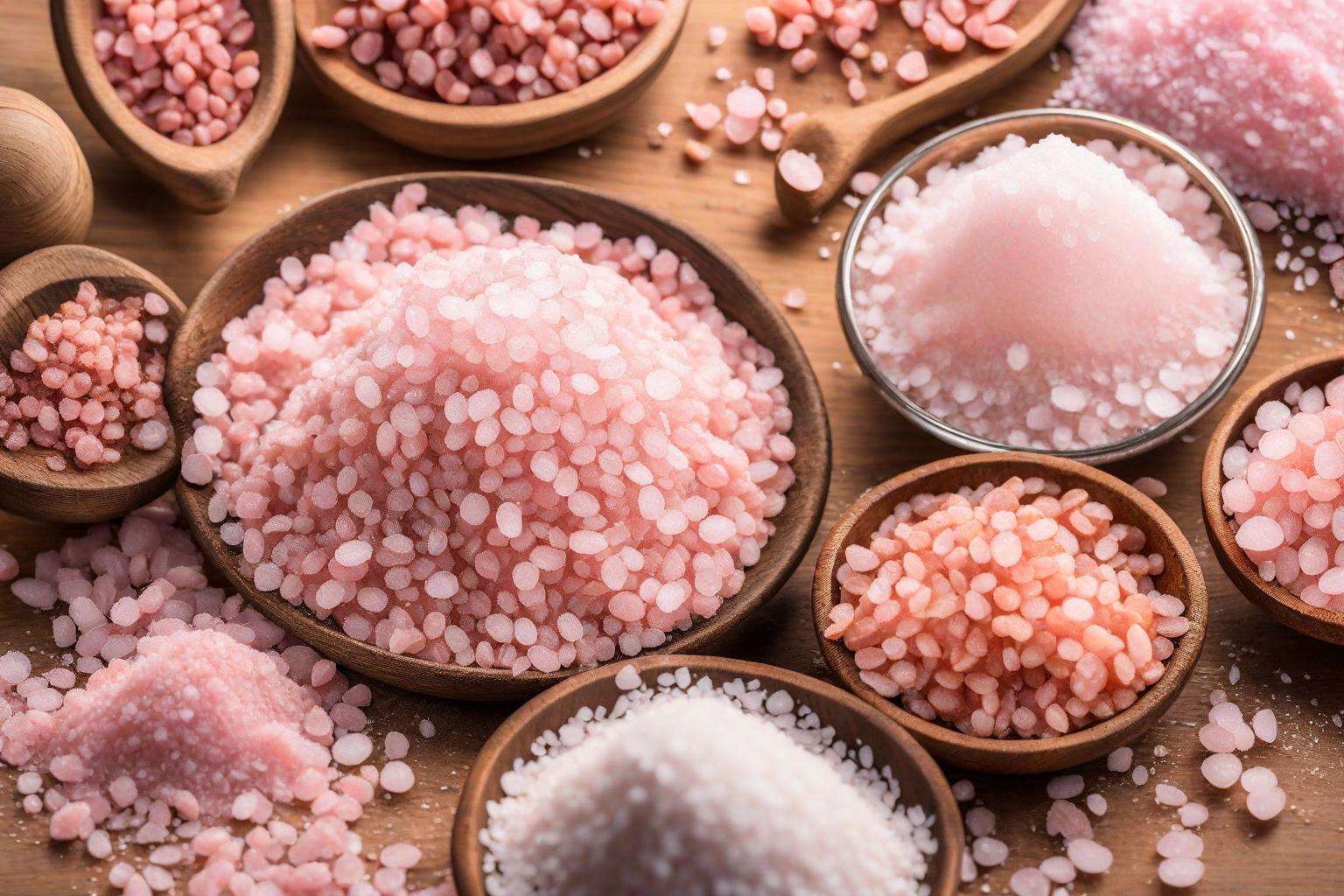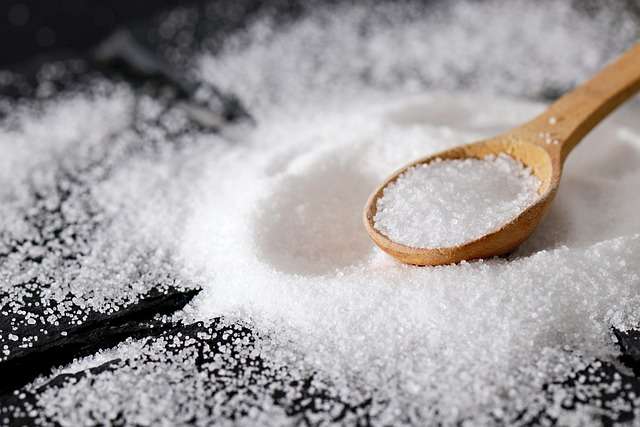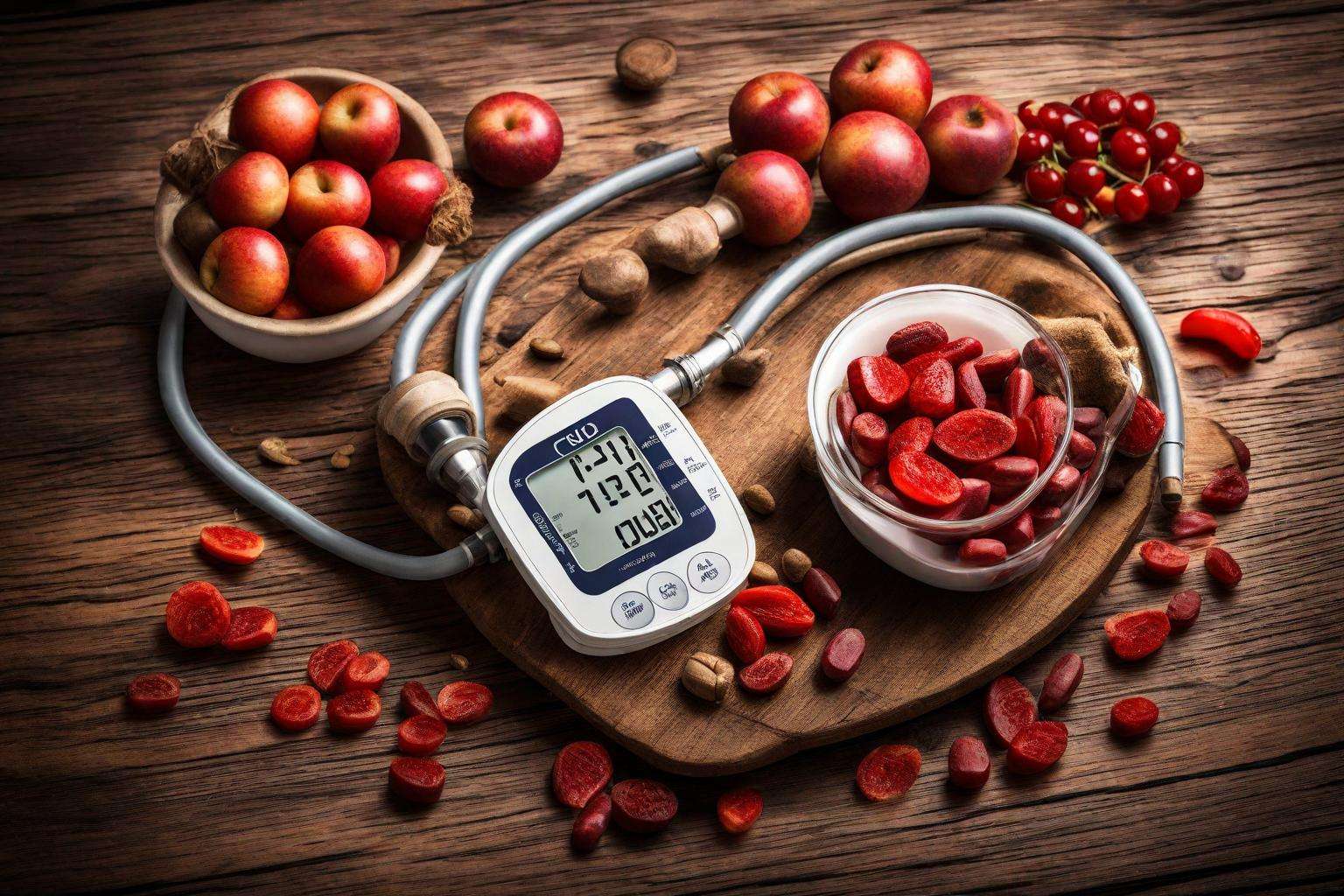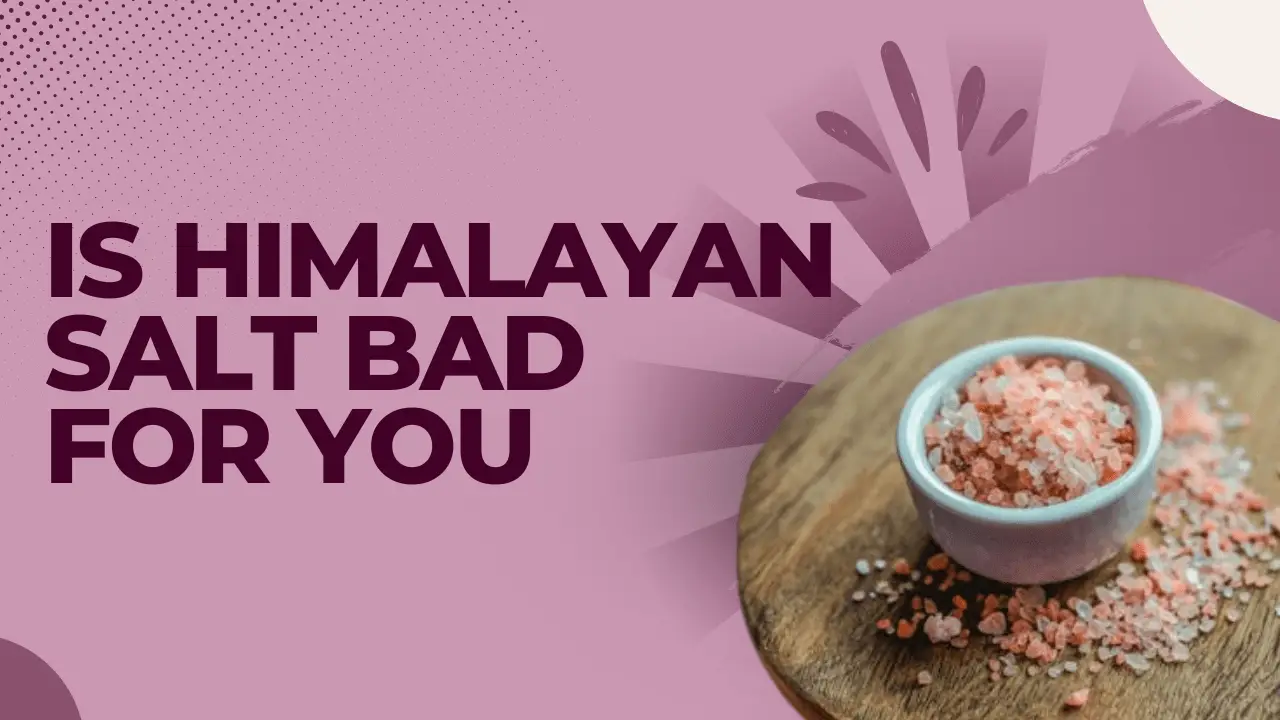Is Himalayan salt bad for you or good for you? It mostly depends on a number of variables, such as dietary preferences, general lifestyle choices, and individualized medical problems.

Sodium Content: The main ingredient in Himalayan salt, as in all salts, is sodium chloride. Overconsumption of salt can result in hypertension, heart disease, and stroke, among other health problems.
Mineral Content: Advocates of Himalayan salt frequently highlight the salt’s high mineral content, asserting that it includes vital minerals including calcium, potassium, magnesium, and iron. Although trace amounts of these minerals are present in Himalayan salt, their amounts are often negligible when compared to the nutrients found in other food sources.
Purity and Pollution: Pure and contaminant-free Himalayan salt is a common marketing claim. Nonetheless, some Himalayan salt products may include contaminants and heavy metals, which has sparked worries. Selecting reliable brands and suppliers is crucial to guarantee the safety and purity of the salt you eat.
Moderation: For the majority of people, consuming Himalayan salt in moderation as part of a balanced diet is unlikely to be harmful. It can flavor food and offer trace levels of necessary minerals. On the other hand, overindulging should be avoided.
What is pink salt and where is it found?
Himalayan salt, sometimes referred to as pink salt or Himalayan pink salt, is a kind of rock salt that is extracted from Pakistan’s Khewra Salt Mine, which is located in the Himalayan foothills. It gets its name from the distinctive pink tint that comes from trace minerals found in the salt deposits, like iron oxide.

Because it is lightly processed and devoid of additives that are typically included in table salt, Himalayan salt is said to be among the purest types of salt that are now accessible.
Since it includes trace levels of important minerals including calcium, potassium, magnesium, and iron, its mineral composition is frequently praised as being better than that of ordinary table salt.
Himalayan salt has become more and more popular in recent years due to its unique look and alleged health benefits. It is frequently used in cooking, as a spice, in bath salts, and even in ornamental salt lamps.
Why is Himalayan salt pink?
The crystals of salt contain large amounts of iron oxide, which gives the salt its peculiar color: somewhere between red and pink. The iron oxide in its crystals comes from hot lava.
Volcanic lava rushes towards the foothills of the Himalayas and flows into the ocean, where it mixes with salt and naturally evaporates due to high temperatures. This process results in the product’s unusual color and the presence of many minerals within it.
What is the difference between pink salt and ordinary salt?
The main characteristics of pink salt are its mild, subtle taste and special smell. This is how connoisseurs define the authenticity of this product. The main difference between Himalayan crystal salt and regular table salt is of course the color.

The iron and minerals are preserved in the pink salt, which gives it its unusual color. Chemicals are used to bleach table salt during production, causing it to lose its natural color.
Rose salt is dried in the purest natural conditions by exposure to the heat of the sun, which is not the case with regular salt: it is heated to high temperatures.
This also has a negative impact on its chemical composition. Normally, table salt contains saturated iodine for prevention purposes. However, it is poorly absorbed by the body because it is not an all-natural element.
For transportation and storage of Himalayas, no foreign substances are used. Salt, on the other hand, is treated with a special substance so that it does not clump, stick in the container, or dissolve in water. Salt accumulation in the body can cause serious health problems.
Pink Himalaya is completely digestible by the human body. All this manipulation of table salt has given it a bad reputation. However, instead of chemically processed traditional salt, you can buy pink Himalayan salt, a natural, holistic product that doesn’t cause health problems.
The more than 80 trace elements in the Himalayas enable the human body to completely absorb sodium and chlorine without precipitation. In contrast, table salt has a poor composition of these elements, which leads to sodium deposition and threatens health problems.
Composition and calories:
Pink Himalayan salt is the highest ranked of all its relatives. This is due to its unusual chemical composition. It contains many minerals, balanced by nature itself. It’s especially useful because it has the lowest sodium content at 38% compared to other types of salt.
Together with potassium and chlorine, it regulates water and salt metabolism. Sodium depends on tissue endurance, normal heartbeat, and regulation of blood pressure.
Pink Himalaya contains about 60% chlorine, which is always combined with other ingredients. Without chlorine in the body, it is impossible to regulate processes at the cellular level and the overall functioning of nerve cells.
In addition to the above ingredients, pink Himalayan salt also gathers iron, molybdenum, boron, vanadium, and other beneficial substances, accounting for 3% of the huge list of 80 elements. These elements help sodium and chloride be fully absorbed by the body.
In 100 grams of product, protein and fat are 0.1 grams each, carbohydrates are 0.7 grams, and the caloric value is 5 kcal.
Pink Himalayan Salt Benefits:
For most health-conscious people, the benefits of pink Himalayan salt are obvious as it contains useful macro and micronutrients that the body requires for proper functioning.
People suffering from gastritis and pancreatitis can gradually recover from these diseases by using Himalayan salt in their diet.

- People with high blood pressure and those suffering from constipation will feel the benefits of this product.
- Many experts recommend using Himalayan salt during a hangover because the potassium and magnesium it contains reduce stress on the cardiovascular and central nervous systems.
- When a person wants to lose weight, he tries to protect the body from fat deposits. Pink salt stimulates metabolic processes, speeds up digestion, and prevents fat deposition.
- Himalayan is widely used to fight cellulite.
- Seniors will also find the benefits of pink Himalayan salt. The decline in micronutrients important to the body in old age is difficult to prevent. Himalayan salt can help. Regular and proper use of table salt for a week will result in visible results both externally and internally.
- Due to the normalization of metabolic processes, swelling will disappear. If inflammatory processes are ongoing, they may slow down or stop altogether. Cells are regenerated and renewed, joint pain is relieved, and skin is visibly rejuvenated.
Conclusion:
“Is Himalayan salt bad for you?” lacks a clear-cut response. Even though Himalayan salt has certain special minerals, its high sodium level can still be harmful to your health if you use it too much. However, Himalayan salt is acceptable to use in moderation as part of a well-balanced diet. In the end, when introducing Himalayan salt into your lifestyle, it’s critical to promote moderation and take individual health factors into account. Click to learn more.
FAQs:
1. Is Himalayan salt healthier than table salt?
Himalayan salt contains trace minerals, but its health benefits over table salt are minimal. Moderation is key for both.
2. Can Himalayan salt lower blood pressure?
There’s no conclusive evidence supporting this claim. Excessive salt intake, regardless of type, can actually raise blood pressure
3. Is Himalayan salt free from contaminants?
While marketed as pure, some products may contain pollutants. Choose reputable brands for assured quality.
4. Does Himalayan salt provide essential minerals?
It contains trace amounts of minerals like calcium and potassium, but relying solely on it for nutrients isn’t recommended.
5. Should people with hypertension avoid Himalayan salt?
Individuals with hypertension should monitor sodium intake carefully, including Himalayan salt, and consult with a healthcare professional for personalized advice.
